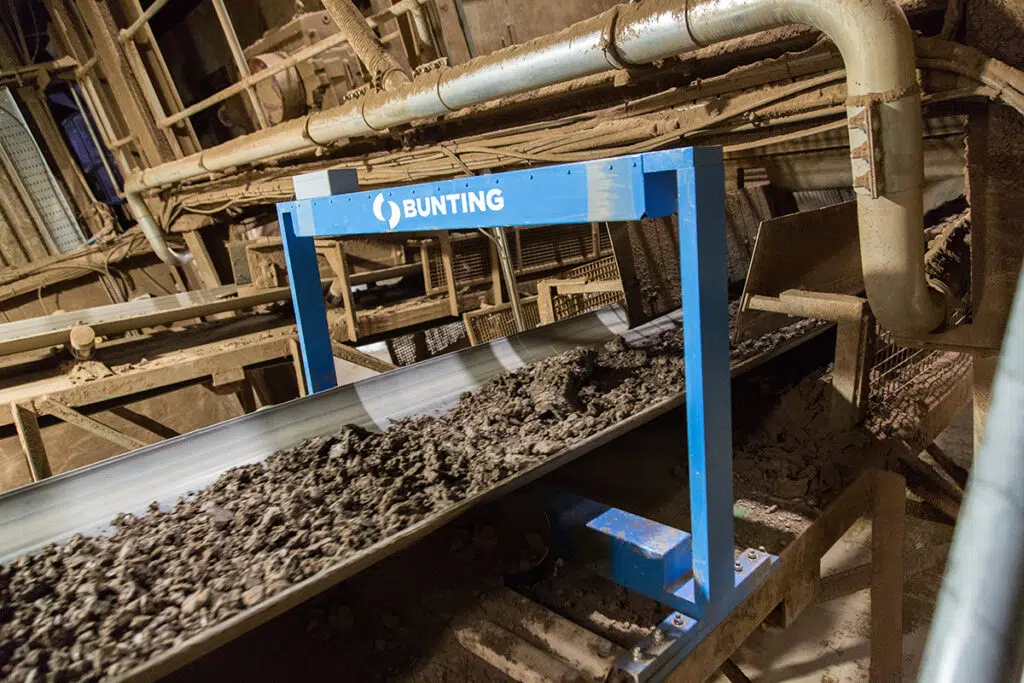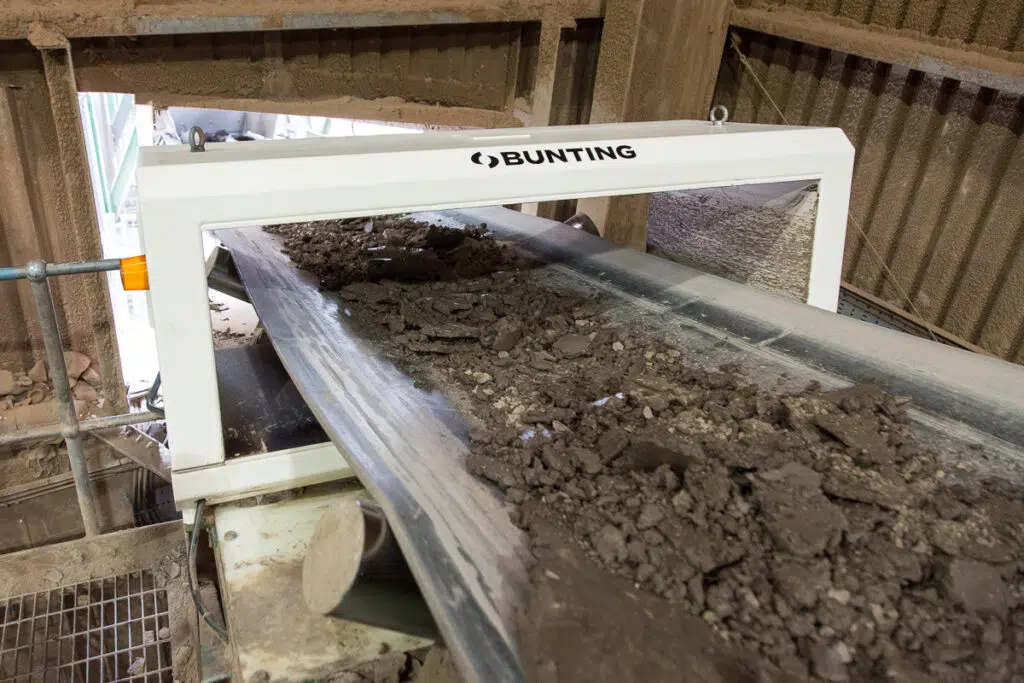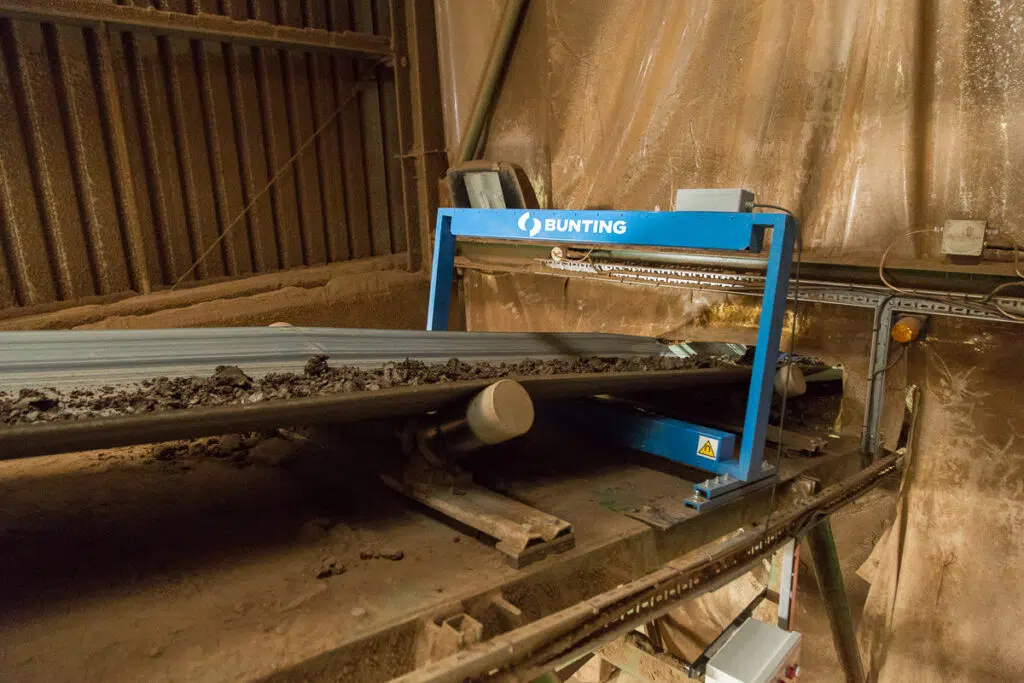Metal Detectors Prevent Plant Damage at Plasmor
By Paul Fears | 30 September 2024
Plasmor has installed three Bunting metal detectors to locate tramp metal and prevent damage to processing plant at their building block manufacturing site in Heck, East Yorkshire, UK.

Plasmor Limited produce a wide range of innovative and high-quality building blocks for commercial, industrial, residential and prestigious construction projects. Established in 1959, Plasmor Limited remains privately owned and supplies over 300 concrete block and concrete block paving products to the building industry throughout the UK.
Three Bunting Metal Detectors Installed
At the Heck site, Plasmor produce the aggregate for the manufacture of building blocks. The aggregate mix includes clay, Fuller’s earth (a by-product from other industries), and recycled dust from the plant’s extraction systems ensuring that the operation produces zero waste. Plasmor installed the three Bunting metal detectors on three separate material handling conveyors.
On the primary 1.2-metre-wide feed conveyor carrying quarried clay into the plant, Plasmor installed a meTRON 05D tunnel metal detector. The clay received into the plant is occasionally contaminated with damaging tramp metal, which if left undetected would damage plant later in the process.

The divisible tunnel-type meTRON 05D metal detector detects both ferrous and non-ferrous metals present in the conveyed clay. The sensitivity of the metal detector is adjusted to suit the application, focusing on the size and type of tramp metal that could cause damage to processing plant. The ‘divisible’ design enables simple and quick installation without needing to cut the conveyor belt.
In operation, tramp metal passing through the metal detector triggers a change in the detector’s magnetic field, which registers in the control panel. In this installation, the identification of tramp metal results in the stopping of the conveyor and the sounding of an audible and visual alarm. Once detected, the problematic metal is manually removed. The metal detector is then reset and the process restarted.
Another two metal detectors are positioned on two separate conveyors handling clay prior to extrusion. The extruded clay then progresses to two large rotating kilns.
The model TN77 metal detector detects damaging tramp metal such as tramp iron and low-grade manganese steel (e.g. digger teeth). The widely-used TN77 is easy to install and simple to operate.
The TN77 metal detectors are both mounted around 0.8-metre-wide conveyors, each handling approximately 15 tonnes per hour of clay. These metal detectors are installed to locate any tramp metal contamination, but especially metal parts that had broken away from equipment earlier in the process, such as the tips of the rotating blades that break up the clay as it feeds onto the conveyor.

The TN77 metal detector sensitivity is set specifically to find tramp metal that would damage the extruder. As with the meTRON metal detector, tramp metal passing through the detector stops the conveyor and sets off a visual and audible alarm, allowing the maintenance team to find and remove the metal.
“Tramp metal entering the extruder caused costly and time-consuming damage,” explained Robert Whitlam, Plasmor’s Clay Operations Manager. “Installing the metal detectors prevents such damage and the investment is recovered by stopping just one piece of tramp metal.”